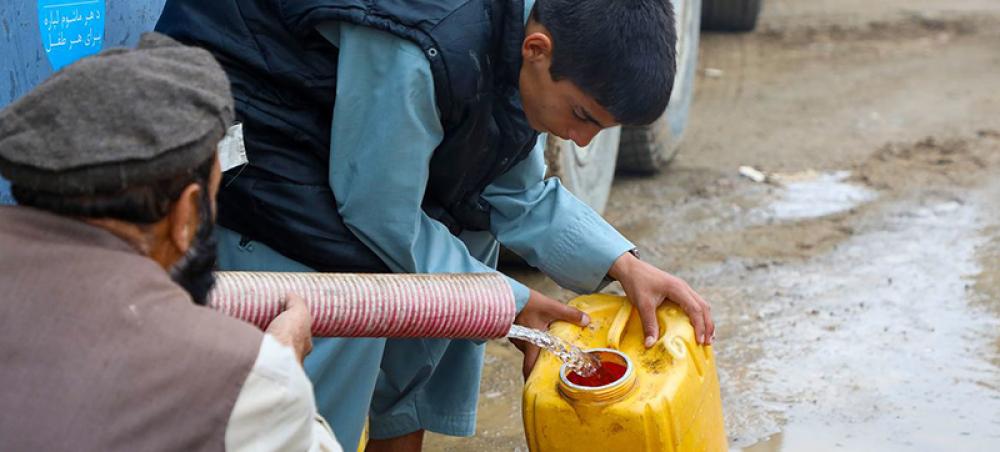Just Earth News | @justearthnews | 13 May 2024, 05:45 am Print
 Afghanistan
Afghanistan Photo Courtesy: UNICEF/Hasinullah Qayoumi
UN humanitarian teams scrambled to get lifesaving aid to communities devastated by deadly flash floods in northeastern Afghanistan over the weekend.
Flash floods in the area have reportedly killed at least 300 people, including 51 children, with many more injured, with these figures expected to increase as additional reports come in, according to UN agencies.
UN chief António Guterres expressed his condolences to the families of the victims.
“The United Nations and its partners in Afghanistan are coordinating with the de facto authorities to swiftly assess needs and provide emergency assistance,” said his spokesperson in a statement, extending wishes for a swift recovery to those injured and condolences to the families of the victims.
Most of the casualties were reported in Baghlan province, where heavy rains destroyed an estimated 3,000 houses, flooded farmland, washed away livestock, closed schools and damaged health centres.
Takhar and Badakhshan provinces were also impacted with initial reports of at least 300 houses damaged, according to the UN Children’s Fund (UNICEF).
UN teams mobilise on the ground
“UNICEF and our partners are on the ground and are making every effort to bring quick relief to the affected families and communities,” Dr. Tajudeen Oyewale, UNICEF Representative in Afghanistan, said on Sunday, expressing condolences to the families mourning the loss of loved ones.
A UNICEF-supported mobile health and nutrition team has also been dispatched and teams are on the ground to help conduct additional assessments.
“The heavy rains and subsequent floods have disrupted lives and pose a significant risk to children in the affected provinces,” Dr. Oyewale said. “As families cope with the loss, maintaining access to safe water, health and protection services is paramount. As always, UNICEF stands with the children and people of Afghanistan during this difficult time.”
Aid swiftly deployed
Working with partners, UN agencies are already distributing aid.
UNICEF has dispatched 450 family kits, 500 hygiene kits, 476 blankets for adults and babies and 100 clothing kits alongside support provided by other UN agencies and partners.
Meanwhile, the UN migration organisation (IOM) has been distributing aid packages that include temporary shelters, essential non-food items, solar modules, clothing and tools for repairs to their damaged shelters.
The UN World Food Programme (WFP) is currently distributing energy biscuits to survivors of the floods, according to the agency’s post on social media on Sunday.
WFP also said this flood is one of the many events in recent weeks caused by unusually heavy rains.
Extreme weather highlights need for resilient efforts
UN relief chief Martin Griffiths said “this extreme weather event underscores the need for climate-resilient humanitarian efforts.”
Meanwhile, the UN relief agency, OCHA, is working with partners and national authorities to provide shelter, food and healthcare, he said in a post on X on Sunday.
Afghanistan is among the 10 most vulnerable countries to climate change and has been experiencing a rise in extreme weather conditions, notably floods, drought and sand and dust storms, resulting in the loss of lives and livelihoods and significant damage to infrastructure.
- Catastrophe alert: UN warns Asia is facing unprecedented cyclones and rainfall
- Catastrophe alert: UN warns Asia is facing unprecedented cyclones and rainfall
- India’s West Coast Turns Protector: Whale Shark Rescues Surge from Gujarat to Kerala
- Belém COP30 announces major climate finance boost
- Three dead after magnitude 5.7 earthquake hits Bangladesh, strong tremors felt in Kolkata



-1763561110.jpg)


